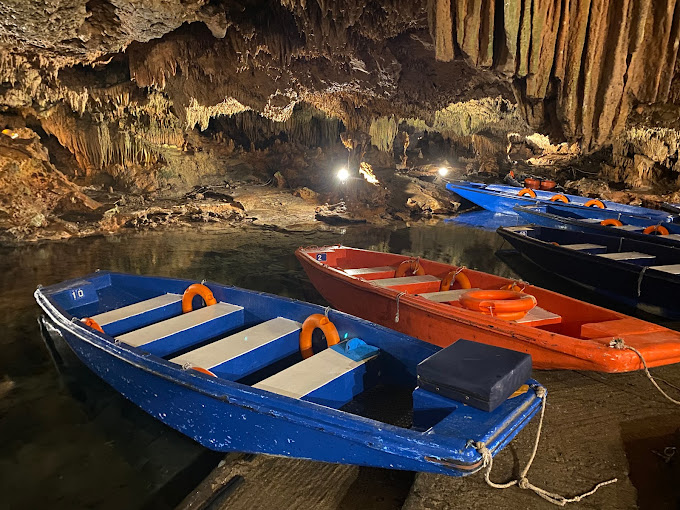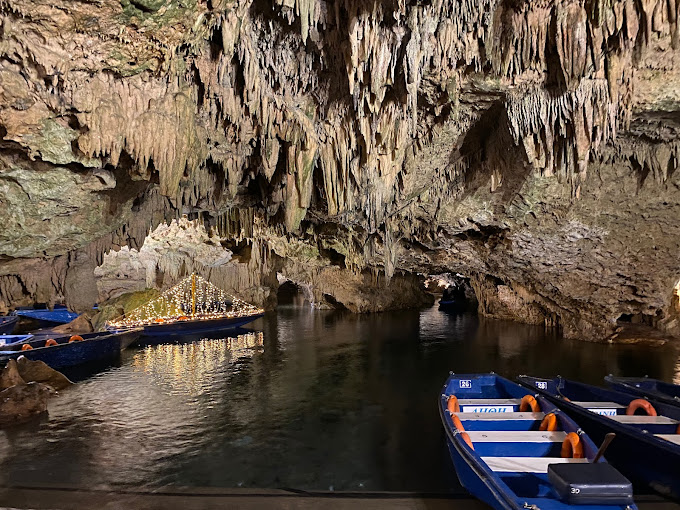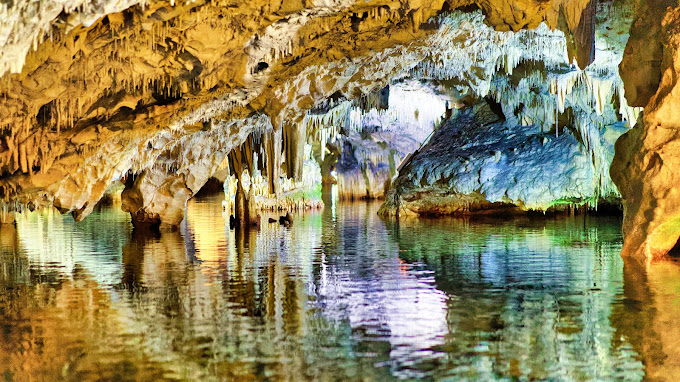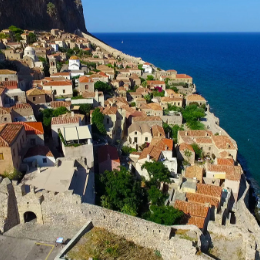The Glyfada (or Vlychada) Cave of Diros is one of the most captivating natural caverns in Greece, located on the western coast of Laconian Mani, in the Bay of Diros, Municipality of Eastern Mani.
The archaeological significance of the cave became known to locals from the early 20th century. However, official exploration began in 1949 by the founders of the Hellenic Speleological Society, Yiannis and Anna Petrocheilos. This exploration revealed a stunning underground world with a length that now exceeds 15 kilometers and a depth reaching 80 meters.
The formation of the cave began hundreds of thousands of years ago. The stalactites and stalagmites hanging beneath the waters today formed when the sea level was much lower than it is today. The water inside the cave is brackish and highly mineralized, with a temperature of approximately 14°C, while the air temperature ranges from 16 to 19°C.
The natural entrance of the cave has a diameter of only half a meter and is located near the sea surface. During exploration, fossilized bones of panthers, hyenas, lions, deer, rhinoceroses, and an impressive concentration of hippopotamus bones are discovered.
A few meters east of the cave lies the "Alepotrypa Cave," which features petroglyphs and enriches the archaeological wealth of the area.
With these data, the Glyfada Cave of Diros constitutes an exceptional natural treasure and an important monument of archaeological and natural interest in the heart of Laconian Mani.
Discovering the Glyfada Cave of Diros: A Natural Treasure in the Heart of Laconian Mani
- DATE 2024.05.16
Copyright © 2024 by Lakonia Guide











